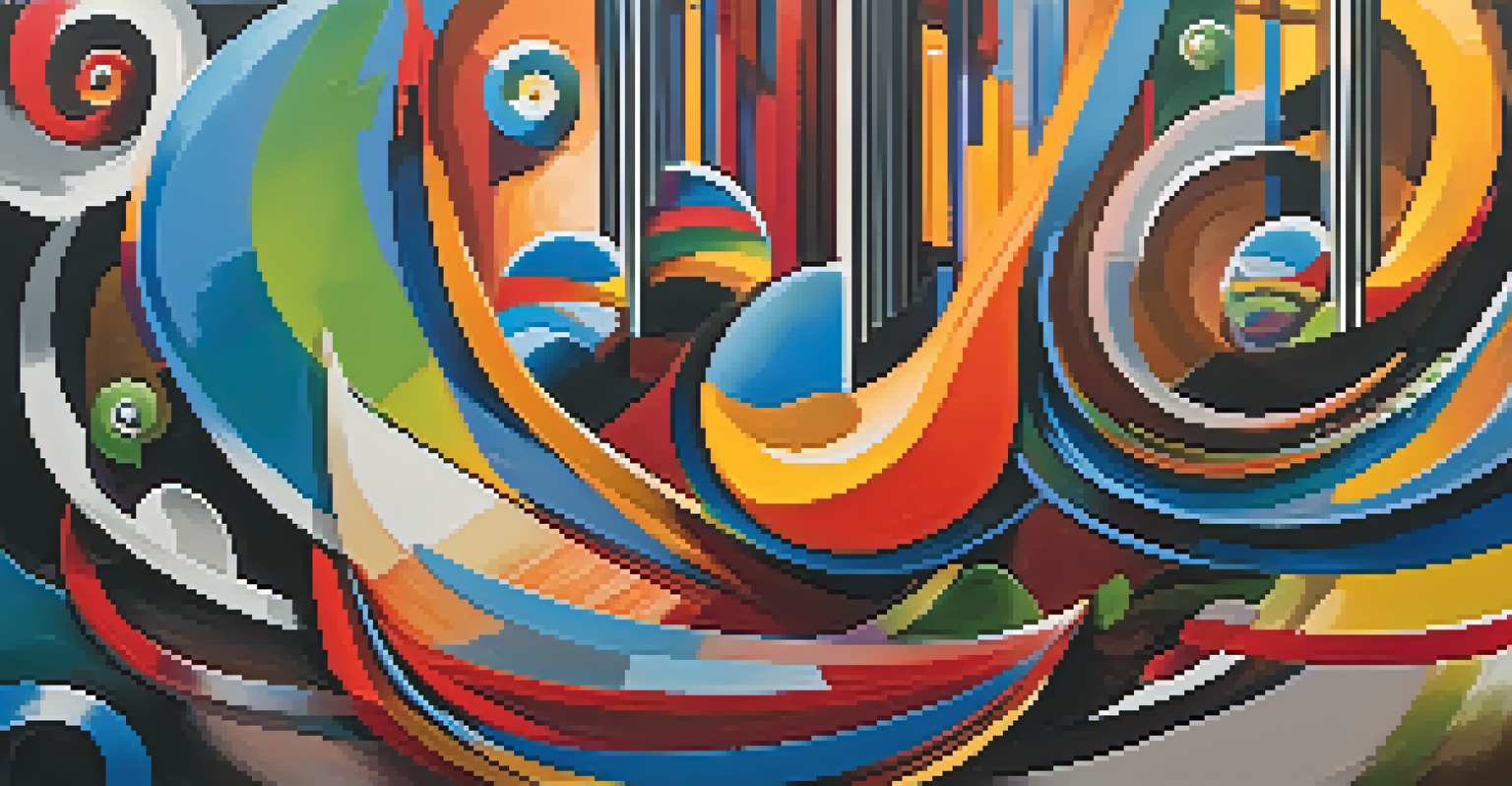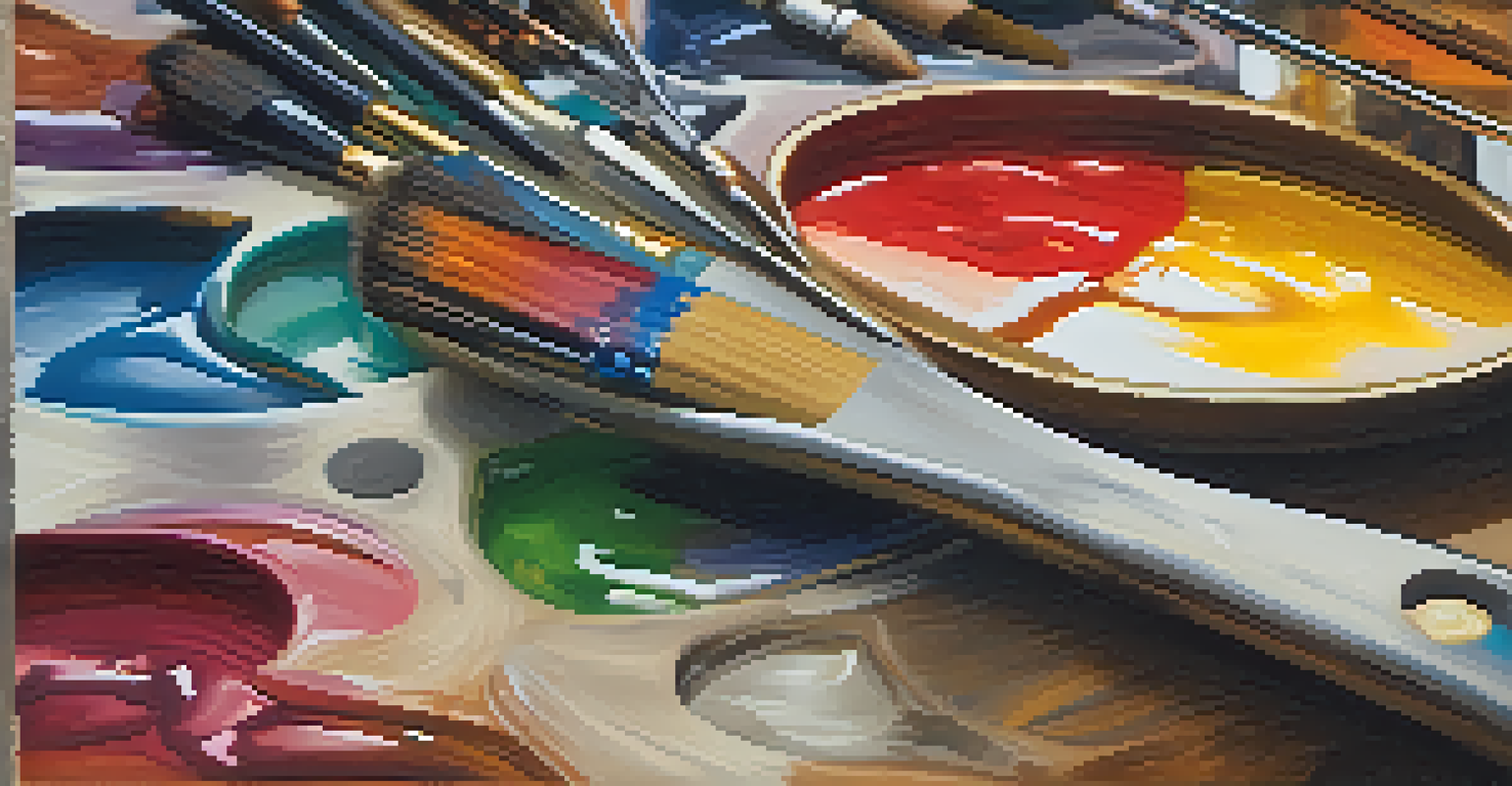Visual Harmony: The Influence of Painting on Classical Music

The Interplay of Visual Art and Music in History
Throughout history, visual art and music have shared a profound relationship, with each form influencing the other in various ways. Artists and composers often drew inspiration from their surroundings, creating a beautiful dialogue between color on canvas and sound in concert. For instance, the Impressionist movement in painting, characterized by its focus on light and color, paralleled the Impressionist music of Debussy and Ravel, who sought to evoke similar feelings through their compositions.
Color is the keyboard, the eyes are the harmonies, the soul is the piano with many strings.
This synergy can also be seen in the works of classical composers who were inspired by famous paintings. For instance, Mussorgsky's 'Pictures at an Exhibition' was directly influenced by Viktor Hartmann's artworks, turning visual experiences into auditory masterpieces. Such collaborations highlight how visual and auditory elements can blend, creating a richer experience for audiences.
As both art forms evolved, they began to intertwine more closely, leading to the establishment of art movements that embraced both music and painting. The way these two disciplines reflect the emotions and thoughts of their time showcases their timeless connection, inviting audiences to explore the boundaries of creativity.
How Color Theory Influences Musical Composition
Color theory, which examines how colors interact and the emotions they evoke, plays a significant role in both painting and music. Just as certain colors can convey feelings—like blue for sadness or yellow for joy—musical notes and chords can elicit similar emotional responses. Composers often think of their music in terms of colors, using specific harmonies to create an emotional palette that resonates with listeners.

For example, the use of major and minor scales can evoke feelings of happiness or melancholy, akin to how a bright yellow or deep blue might affect a viewer. Composers like Richard Wagner were known to associate particular keys with specific colors, allowing them to paint with sound in a way that mirrors the artist's brush on canvas. This concept of musical color enriches the listening experience, making it more vivid and relatable.
Art Forms Influence Each Other
Visual art and music have historically shared a profound relationship, inspiring and enhancing each other through various movements and collaborations.
Additionally, the blend of instruments in an orchestra can be likened to a painter's choice of hues, where each sound adds texture and depth to the overall piece. This interplay fosters a unique sense of harmony, demonstrating that both music and painting are fundamentally about conveying emotion and experience through their respective mediums.
The Role of Symbolism in Both Art Forms
Symbolism has long been a crucial element in both visual art and classical music, allowing artists to communicate deeper meanings beyond the surface. In painting, symbols might represent ideas or emotions—like a dove for peace or a skull for mortality—while in music, motifs can symbolize characters, themes, or moods. This shared language deepens the connection between the two forms, enriching the audience's understanding and appreciation.
Music is an outburst of the soul.
For instance, Beethoven's 'Eroica Symphony' is a prime example of musical symbolism, where specific motifs represent heroism and struggle. Similarly, visual artists like Gustave Courbet used symbolic elements in their paintings to challenge societal norms and provoke thought. The use of symbolism in both fields invites audiences to engage more critically with the work, allowing for a more immersive experience.
As artists and composers adopt symbols from their respective disciplines, they create a tapestry of meaning that resonates across both mediums. This interplay of symbols can lead to a greater exploration of themes such as love, loss, and identity, illustrating how deeply intertwined visual art and music truly are.
Famous Collaborations Between Artists and Composers
Throughout history, many renowned artists and composers have collaborated, blending their talents to create innovative works that resonate across disciplines. One notable example is the collaboration between painter Wassily Kandinsky and composer Arnold Schoenberg, who explored the relationship between color and sound in their respective works. Their partnership exemplified how visual and musical arts could converge, leading to a richer understanding of abstract expression.
Another famous collaboration occurred with the Ballets Russes, where visual artists like Pablo Picasso and composers such as Igor Stravinsky worked together to create groundbreaking ballet productions. The fusion of striking visual elements and dynamic music resulted in performances that were not only entertaining but also deeply impactful, reflecting the cultural zeitgeist of their time.
Color Theory in Music Composition
Composers often use color theory to evoke emotions in their music, similar to how colors in painting convey feelings.
These collaborations not only highlight the connection between painting and music but also inspire future generations to explore interdisciplinary art forms. The blending of different artistic expressions fosters creativity and innovation, encouraging artists and composers to push boundaries and experiment with new ideas.
The Influence of Impressionism on Musical Style
The Impressionist movement, which originated in painting, had a significant impact on the development of classical music in the late 19th and early 20th centuries. Artists like Claude Monet and Pierre-Auguste Renoir focused on capturing fleeting moments and the effects of light, which inspired composers to explore similar themes in their music. This resulted in compositions that emphasized atmosphere and emotion over traditional structures, creating a new musical language.
Composers such as Debussy and Ravel embraced this style, using innovative techniques like whole-tone scales and ambiguous harmonies to evoke a sense of impressionistic beauty. Just as Impressionist painters would blend colors to create a soft focus, these composers blurred the lines of musical form, allowing listeners to experience a range of emotions and imagery within their works.
The connection between Impressionism in painting and music illustrates how artistic movements can influence one another, leading to a shared exploration of similar themes. This cross-pollination enriches the creative landscape, inviting audiences to engage with both visual art and music in a more profound way.
Exploring Modern Connections Between Visual Art and Music
In contemporary times, the relationship between visual art and music continues to flourish, with artists and composers drawing inspiration from one another. Multimedia projects, such as installations that combine visual art with live music, have emerged, creating immersive experiences that captivate audiences. These collaborations allow for a deeper exploration of themes, as viewers and listeners engage with both forms simultaneously.
Moreover, many musicians have turned to visual artists for inspiration, using artwork as a muse for their compositions. For example, the band Pink Floyd famously created an album titled 'The Dark Side of the Moon,' which was inspired by the artwork of various artists. This approach highlights how visual and auditory experiences can enhance one another, resulting in a richer artistic expression.
Modern Interdisciplinary Collaborations
Contemporary artists and musicians continue to explore their connection through innovative multimedia projects and collaborations.
As technology continues to evolve, the possibilities for collaboration between visual art and music have expanded dramatically. Artists can now create digital experiences that blend sound and visuals in innovative ways, pushing the boundaries of creativity and inviting audiences to explore the interconnectedness of these two dynamic forms.
Conclusion: The Lasting Impact of Visual Harmony
The interplay between painting and classical music reveals the profound connections that exist between different forms of artistic expression. By understanding how these two disciplines influence each other, we gain insight into the creative process and the emotional resonance that art can convey. Visual harmony enriches our experiences, inviting us to engage with both art forms on a deeper level.
Moreover, as artists continue to explore the relationship between visual art and music, new avenues of creativity will emerge, allowing for innovative expressions that challenge our understanding of both mediums. This ongoing dialogue between painting and music serves as a testament to the boundless nature of human creativity.

Ultimately, the influence of painting on classical music—and vice versa—reminds us that art is a universal language that transcends boundaries. By embracing this visual harmony, we can appreciate the beauty and complexity that arises when different forms of artistic expression come together.